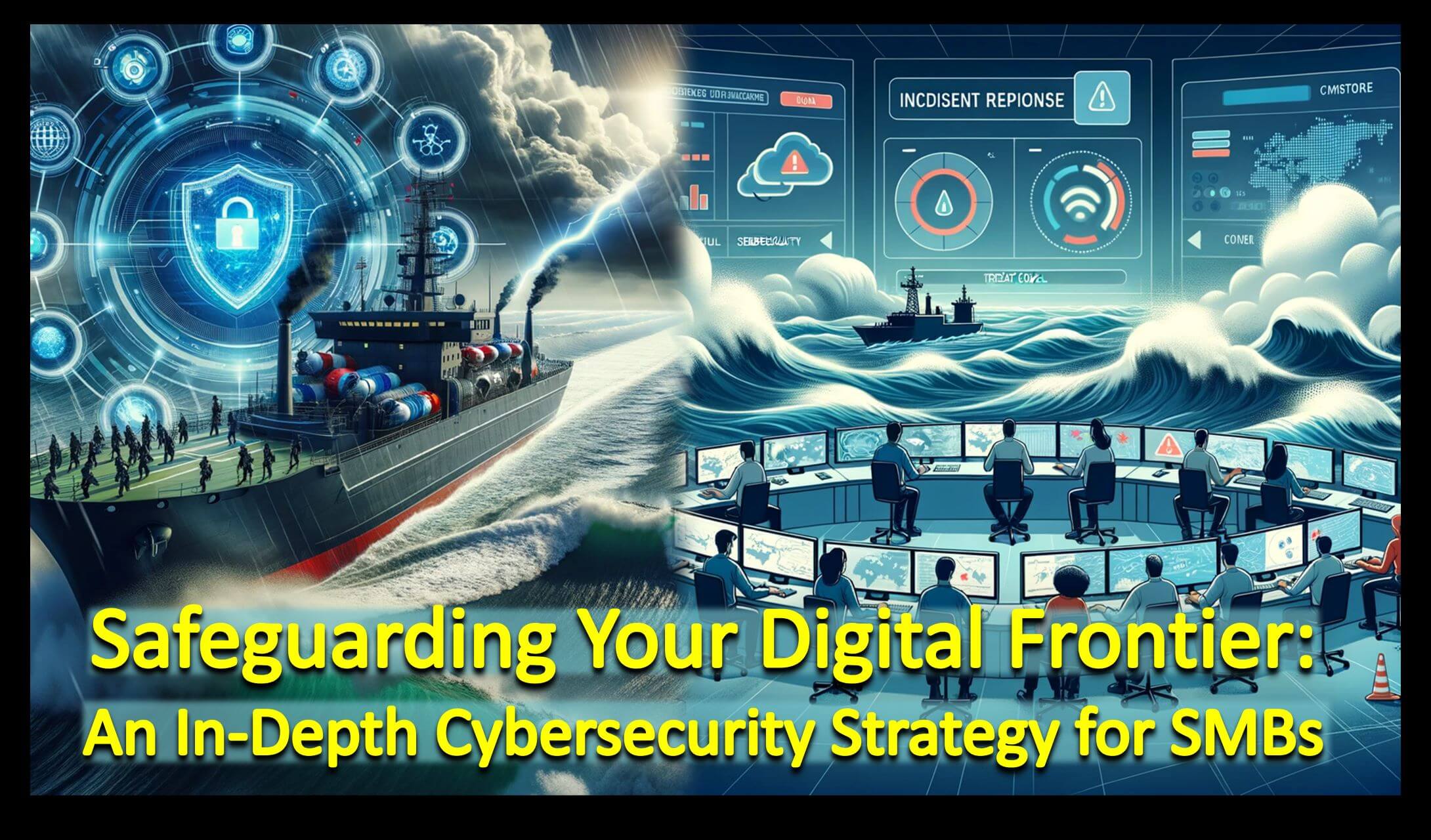Safeguarding Your Digital Frontier: An In-Depth Cybersecurity Strategy for SMBs

Overview
In the digital era, small to medium-sized businesses (SMBs) embark on a journey through a cyber landscape filled with both opportunity and peril. The internet, a sea of endless possibilities, is also fraught with cyber threats that can capsize an unprepared business. Cybersecurity is the guiding star for SMBs, allowing them to navigate through these treacherous waters with confidence and resilience.
1. Fortifying Your Digital Defenses: A Multi-Layered Cybersecurity Framework
A resilient cybersecurity framework is the cornerstone of a secure business in the digital world. This framework should be comprehensive, encompassing not only technical defenses but also strategic processes and a proactive stance on potential threats.
1.1. Commanding the Helm: Building an Effective Incident Response Team
An adept incident response team is the captain and crew who will navigate your business through cyber storms. This team should be a cross-functional group, including members from IT, HR, PR, and upper management, ensuring a holistic approach to incident response. Their training should be rigorous, with regular updates on the latest threat intelligence and response tactics.
1.2. Charting the Unknown: Advanced Security Testing and Strategic Playbooks
Security testing and response playbooks are the charts and instruments guiding your voyage. Penetration testing, vulnerability assessments, and ethical hacking should be part of your routine to uncover weak spots. Playbooks must be detailed, with protocols for every conceivable cyber threat, ensuring your team can respond with precision and speed.
1.3. Reinforcing the Hull: Implementing Robust Security Infrastructure
Your digital infrastructure should be fortified with the latest cybersecurity technologies. Firewalls, encryption, multi-factor authentication, and intrusion detection systems are the reinforced hull of your cyber ship, essential for protecting your data and assets from breaches.
2. Nurturing a Vigilant Crew: Cyber Awareness and Training
The strength of a ship lies in its crew's readiness. In the cyber realm, your employees' awareness and training are critical defenses against attacks.
2.1. Empowering the Watch: Employee Training and Vigilance Programs
Regular, engaging training programs are vital. Employees should be equipped to recognize and respond to cyber threats, from phishing scams/emails to suspicious network activity. Gamification and rewards can be effective in maintaining high levels of engagement and vigilance.
2.2. The Human Shield: Building a Culture of Security
Creating a culture where security is everyone's responsibility is crucial. This involves clear policies, regular communication, and an environment where employees feel comfortable reporting potential threats without fear of blame or retribution.
3. Forming a Fleet: Strategic Alliances and Support Networks
No business is a solitary vessel; forming strategic alliances is key to navigating complex cyber challenges.
3.1. Allies in Calm and Stormy Weather: Partnering with Cybersecurity Experts
Partnerships with cybersecurity firms, IT service providers, and consultants can provide the specialized knowledge and support needed to bolster your defenses and respond effectively to incidents. Choose the best of the best and choose someone you can trust.
3.2. The Signal Flags: Crisis Communication and Public Relations
A clear crisis communication plan is your signal flag system, ensuring that accurate information is conveyed swiftly and effectively to all stakeholders during a cyber incident. This includes predefined communication channels and authorized spokespeople to maintain message consistency and trust.
4. Charting a Course for Continuous Improvement
Cybersecurity is a journey, not a destination. The cyber seas are ever-changing, requiring SMBs to adapt and evolve their strategies continuously.
4.1. Lessons from the Logbook: Conducting Thorough Incident Reviews
After navigating through a cyber incident, conducting a thorough review is essential. This 'logbook' should document the incident's details, the effectiveness of the response, and areas for improvement.
4.2. Adjusting the Sails: Adapting to Emerging Threats and Technologies
As new threats emerge and technologies evolve, your cybersecurity measures must adapt. This means staying abreast of industry trends, investing in new technologies, and revising your strategies to counteract the latest cyber threats.
4.3. The Captain's Perspective: Leadership's Role in Cybersecurity
Leadership must prioritize cybersecurity, dedicating resources and attention to ensure it is woven into the company's fabric. This top-down emphasis on cybersecurity is critical for creating a resilient organization.
Conclusion: Steady as She Goes
For SMBs, the significance of cybersecurity is paramount. It is the compass that guides, the crew that defends, and the continuous vigilance that protects. By building a strong cybersecurity framework, fostering a culture of awareness, establishing robust support networks, and committing to ongoing improvement, your business can confidently set sail into the digital future.
In the vast cyber seas, readiness is your best strategy. Keep your eyes on the horizon, your crew well-trained, and your defenses robust, and the digital world will be yours to navigate and conquer.

